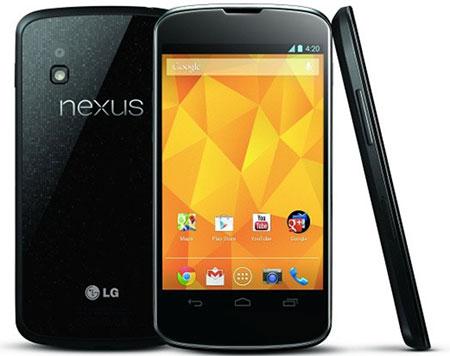
Earlier this month I asked you guys if you thought that LG could make a decent Nexus product – especially considering tech giants like Samsung and HTC had made successful earlier models for the same line that comes straight from Google. The device itself has good specs, and with a price point of around $299-$349 straight from the Google Play Store (without a contract), how can you say no? A lot of people can, because although the device is powerful enough, it doesn’t have 4G LTE capabilities. Here’s the kicker, though – it has the chipset embedded in the device anyway.
iFixit, dubbed “the free repair manual” of the internet, did a breakdown of the LG Nexus 4 and revealed that although the device was claimed to be unable to run 4G LTE, the chipset was definitely inside the device anyway. So what was LG talking about when they said it doesn’t have 4G LTE when the hardware itself shows otherwise?
An LG spokesperson steps up and responds to the discovery by telling the following to Techradar:
“In order to provide the best possible specification for Nexus 4, LG utilized the same powerful Qualcomm Snapdragon chipset as can be found in its 4G LTE product, namely LG Optimus G. This powerful chipset is only available with a combined processor and modem and cannot be implemented separately.”
They continue by explaining that 4G functionality can’t be obtained just by adding the necessary software. The LG Nexus 4 is still missing key components, such as a filter and amplifier needed to access 4G LTE. However, it’s been reported that the device does actually get 4G signal in Canada. So it seems that even though LG claims there’s no loophole around it, there is a way to get 4G signal.
From the looks of it, LG makes these claims in order to protect the sales of the aforementioned LG Optimus G, which does support LTE. This makes no sense to me as the Optimus G, although not a direct Google device like the Nexus line, does have a leg up on the Nexus in regards to certain features. The Optimus G has a 13 megapixel camera, which is a pretty big deal considering most devices only go up to 8. The processor is decent with a Quadcore 1.5 GHz Krait, and although the device currently runs on Android 4.0 (Ice Cream Sandwich) it is planned to be upgraded to Jelly Bean sometime in the future.
I feel like if a device has the equipment and the means to work with a 4G LTE network, it should. It’s kind of a “right” at this point. Why settle for 3G when you can easily have 4G? It’s not like the devices are identical. As I mentioned before, they both have their unique traits that make the phones different, but 4G speeds probably shouldn’t have been sacrificed for the sake of what LG thought was a good sales strategy.
Is LG hiding something regarding 4G? Why would they add the chip in if it served no purpose, other than being a space waster? Obviously they have no plans to make the phone 4G “capable” in the future, but it seems that there is a way around if it works in some areas but not others. I just can’t believe that LG would think that nobody would open up the device to discover the chip – that they could keep it a secret forever.
What do you think LG is up to? Do you think they just kept it in there because they had intentions of making the phone 4G capable, or do you think they might have something else up their sleeve? Let me know what you think in the comments!